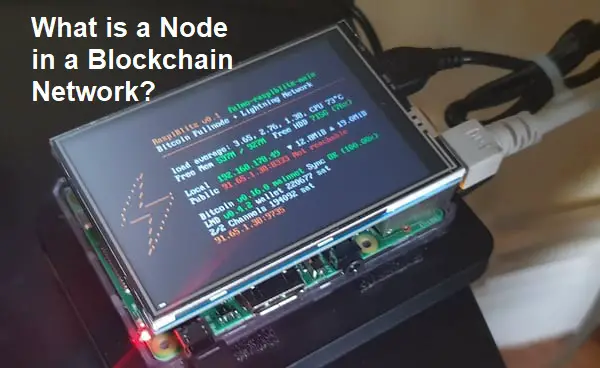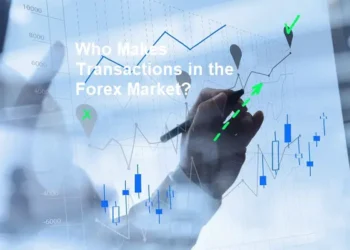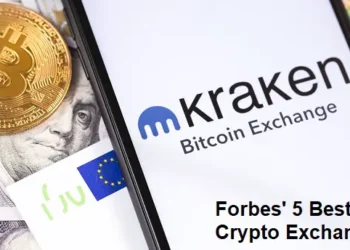Blockchain is the soul of cryptocurrency. Therefore, the blockchain network is the true value of a cryptocurrency.
When a blockchain is made innovatively and is able to solve relevant problems in terms of DeFi, the native coins used in the blockchain have high economic value. Because the community likes the blockchain and is considered to have bright prospects in the future decentralized financial system.
Blockchain is known because it is claimed to be a system that is superior to conventional financial systems. Blockchain offers low transaction fees with a high level of security, even with a direct transaction mechanism between users without passing a third party.
Apart from that, blockchain is also best known for its “decentralization” features. Blockchain is considered better than the current financial system because blockchain is not controlled by any entity. So DeFi is considered a fairer system than the current system.
The blockchain is run by multiple nodes, where the nodes themselves are users who dedicate their computing power to secure the network, open new blocks, verify transactions and add blocks to the blockchain chain.
What are Nodes?
The nodes in the blockchain network are nodes that are connected to each other whose role is to manage the blockchain network. These series of nodes are generally a security system that keeps the blockchain safe from hacking. However, each node has different sections or tasks.
To become a node in a blockchain network, each user usually needs a computer device to run a software node. These devices can work to mine and open new blocks or simply verify transactions.
Each working node network will receive incentives in the form of transaction fees paid by users. Nodes are interconnected and integrated with each other to update user transaction data. That way every node has the same information and is up to date.
Various Nodes in the Blockchain
The blockchain network has several types of nodes with different tasks and specifications. These nodes include, namely:
1. Full Nodes
Full Node is a node that downloads all blockchain information in its entirety. The job of a full node is to verify transactions and validate the user’s signature in each transaction as well as check if there are any double-spends made by the user (which usually happens when the blockchain network is hacked).
2. Master Nodes
The Master Node is a network node whose job is to manage the blockchain. The Master Node does not open new blocks like other nodes. The Master Node verifies the block that contains the transaction records to be added to the blockchain set.
Anyone can become a master node, the general requirement is usually to provide cryptocurrency collateral to the blockchain system. And the amount needed is also not small. So to become a master node operator, the costs incurred can be quite expensive.
3. Light Nodes
Light Node is the light version of full node. Light Node is a blockchain node with the same task as a full node, which is to verify or validate user transactions. The difference is that the light node does not download the entire copy of the blockchain. Light Node only downloads the header section of a blockchain which is a detailed summary of certain blocks.
4.Miner Nodes
Miner Node is a node tasked with opening new blocks on the blockchain network. Miner Node also validates transactions so that they also benefit from this activity. On the other hand, Node miners also benefit from opening new blocks. Usually a reward for each block added. That way miners have two advantages at once that are not obtained by other nodes.
Nodes are an essential part of any blockchain network validating the reliability and integrity of transactions. Blockchain is a decentralized database where all transactions are recorded and the reliability of transactions is continuously monitored and verified by the network itself. Nodes on computers in the blockchain network, verify all transaction activities that occur through algorithm calculations and then approve them. When all nodes have reached a common consensus, they verify then approve the transaction and are added to the blockchain. Therefore, nodes have an important role in controlling the coin blockchain.
Nodes are useful for forming blockchain infrastructure and storing all blockchain data, therefore nodes are very important. All nodes in the blockchain are interconnected and continuously exchange the latest blockchain data with each other so that all nodes stay up to date. They store, distribute and store all the data of the blockchain which means that the blockchain ultimately resides in these nodes. Without nodes, blockchain data will not be accessible. Thus, you can say that nodes are useful for forming a blockchain.
The entire blockchain could theoretically run on a single node, but because it could be stored on only one device, it would be very vulnerable to things like hacks, power outages, or other types of damage. In this sense, a blockchain is actually the same as a simple database. However, when the data on the blockchain is stored on different devices, it becomes more difficult to attack the network. Even if a large number of nodes go offline for some reason, other nodes will keep the blockchain running. Therefore, Blockchain nodes are very important in their function of securing the blockchain.
The purpose of nodes
The main goal of a blockchain node is to verify the validity of each batch of successful network transactions, and these are called blocks. Each node has a sufficiently unique identifier attached to its device which allows it to be distinguished from other nodes in the network.
And nodes also support the network by maintaining copies of the blockchain or they can be used to process transactions. In instances where the nodes are individual parts of a blockchain with a larger data structure, the owners of these nodes are willing to contribute their computing resources to store and validate the data.
Namely those transactions that have the opportunity to collect transaction fees and get rewarded in cryptocurrency. This process is called virtual currency mining, but the processing of these transactions often requires large amounts of computing and data processing power. Thus requiring miners to invest in computers with CPU or GPU that have high specifications.









